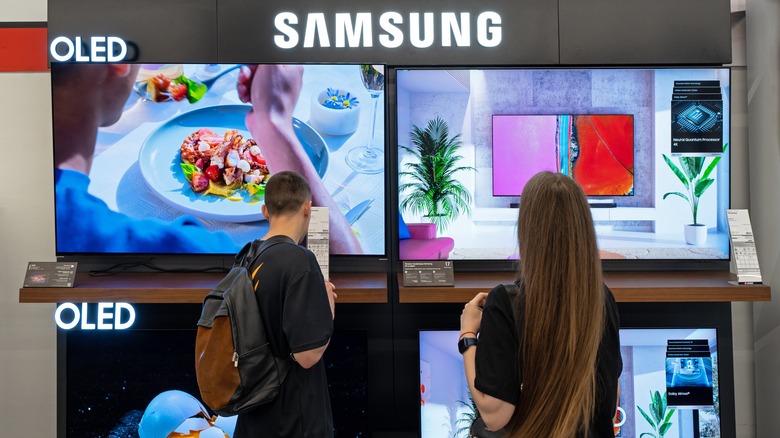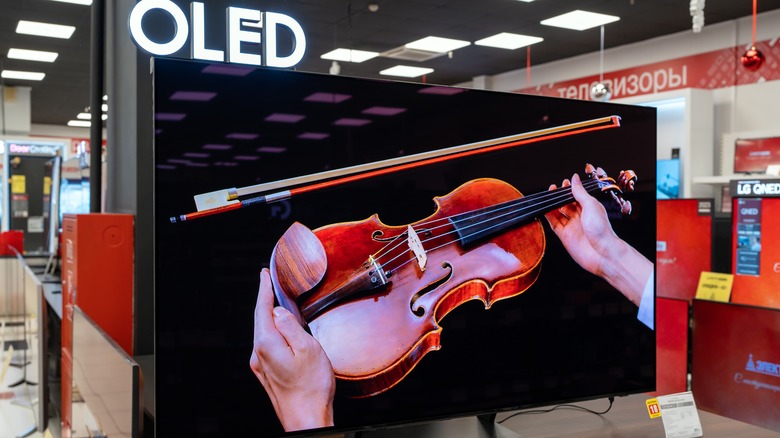Cheap QLEDs Have One Big Advantage Over OLED TVs (But Does It Matter?)
If you're able to have your pick of the litter when purchasing a new television, you'll likely want an OLED TV. These screens will give you the highest quality 4K image you can get in your home, thanks to pure black levels. OLED TVs achieve this by turning off the subpixels entirely, rather than shining a light through a black pixel — which is what you would see on a QLED TV, OLED's most formidable competitor. This means you can get some of the most vivid imagery possible with an OLED, particularly if viewing high dynamic range (or HDR for short) content. OLED TVs are more expensive than cheap QLED screens, but if you have the money, there is almost no reason why you shouldn't go for an OLED over a QLED.
However, there's one way that QLEDs have an advantage, and that's when it comes to a phenomenon called burn-in. This is an unfortunate circumstance where an image stays on an OLED screen as a somewhat transparent background image. It's as if the ghost of a previous show is haunting your current program. The reason this can happen with OLEDs is that they use pixels that emit both light and color, whereas QLEDs have a separate light source. This is why you will almost never experience burn-in with a QLED. That being said, burn-in is easily preventable and not nearly as big of a concern as it sounds.
What causes burn-in and how to avoid it?
There are a couple of reasons why burn-in on an OLED TV should not be that big of a concern for you. For one, TV manufacturers have been improving the technology and materials year after year, and current OLEDs are far less susceptible to burn-in than they were a decade ago. Beyond that, though, it is pretty easy to avoid burn-in. The primary reason why this phenomenon could occur is by prolonged exposure to static images on the screen. This could be still images from a screensaver, pausing a movie, TV show, or video game for a long time, or watching content with many static elements, such as a news ticker at the bottom of the screen or a TV network logo. If you pause something for a couple of minutes, it's no big deal. To achieve burn-in, you need hours upon hours of stasis.
That means avoiding burn-in on your OLED TV is fairly simple, and the chances of it dramatically decrease if you avoid displaying static graphics for extended periods. OLED TVs also have pixel cleaning features, which is a process that tests the strength of each pixel in your TV and adjusts the current sent to each pixel accordingly. They also offer pixel or panel refreshing, which works on more temporary image retention issues. Overall, it's best to avoid static images on your OLED outright, but all hope is not necessarily lost if you need to have a game paused or have the news playing for many hours.

